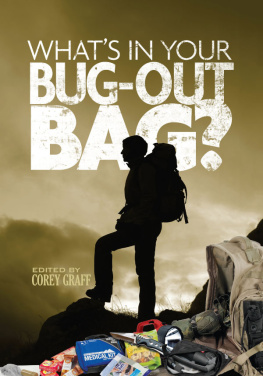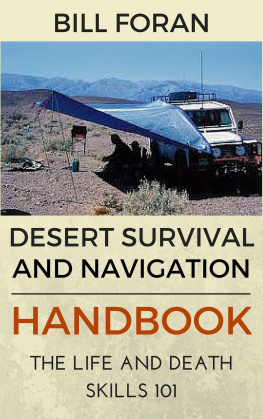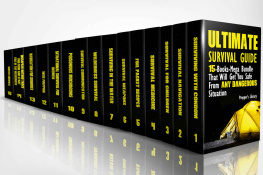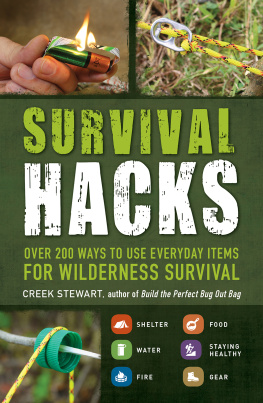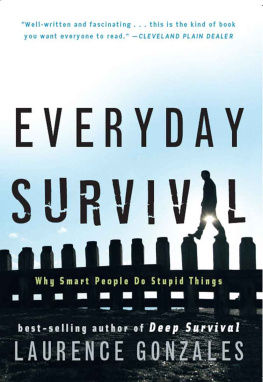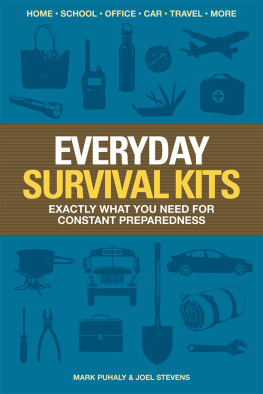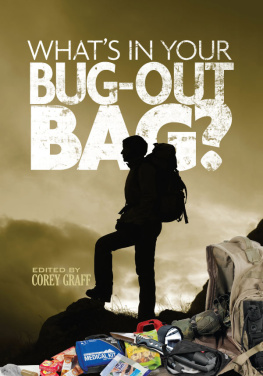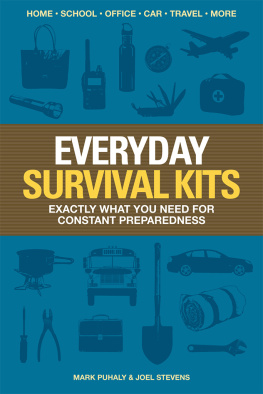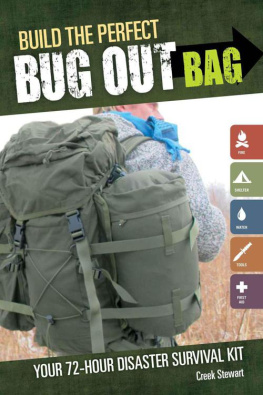Its All About the Pack
When I first began researching backpacks, now almost ten years ago, the term bug-out bag hadnt crept into the common lexicon. I had been assigned to write a magazine article about backcountry bow-hunting, with a focus on backpacks suitable for off-the-grid adventure. Thats when I learned of Patrick Smith, of Kifaru International (www.kifaru.net). Smith is a modern-day mountain man, an avid elk hunter from Colorado, who makes custom backpacks for hunters and the military. He had not only developed backpacks with the most efficient load-bearing systems money could buy, but also had perfected an entire backpacking support system complete with lightweight packable wood stoves and a tipi from which to live in warmth plus a live comfortably in the backcountry philosophy.
Before bug-out bags became fashionable, Smith was killing bull elk on the mountain and carting their butchered hide, antler and meat out on his back. He didnt survive in the backcountry he lived. And quite comfortably, too. I had to try it, and I did with my own adventure into the mountains of Wyoming. With an 80-pound fully-loaded Kifaru backpack seated comfortably on my hip platform, it was the first time Id thought about how to load up and carry a backpack for my own self-sufficient survival. Where ounces are pounds, that custom-made pack made all the difference.
Times have changed. Yesteryears backpack geared toward wilderness survival has become, today, the prototypical bug-out bag. Its no longer reserved for sportsmen seeking trophies but urban dwellers who cant help but see an infrastructure in shambles all around them and the inescapable possibility of total collapse of services. There is a foreboding feeling in the air a dark cloud fueled by constant bad news about the economy and world affairs that is shaking us from our comfortable lives and into the realization that our cozy existence could come crashing to a sudden end at any moment. When we first discussed this book, I was a naysayer. I didnt think anyone would share the details of their survival backpacks. But share they did, and liberally at that. This book gives you a peek inside their packs. Use it to borrow their ideas. And adjust your packs contents where appropriate. I hope this book inspires you to start a bug-out bag project of your own, or improve the one you have. And I hope no, I pray you never have to use it.
Corey Graff, Editor
Introduction
By Jim Nowka
The pack (this the Tasmania Tiger pack, German made) is almost as important as its contents. It carries and protects your life sustaining kit. When choosing a bag, it should allow you many different options to help you organize your stuff in a way that is logical to you. I put an IFAK (Individual First Aid Kit) on the top of my pack so I can get to it in a hurry. The webbing on the outside allows me to customize the pack by adding compatible pouches to the outside.
All across the country, catastrophes and crises occur with shocking regularity. Here in northern Michigan, blinding blizzards knock out power and block off roads, leaving no promise of quick repair or immediate relief. In some regions, tornadoes tear through towns destroying homes, neighborhoods and, sometimes, entire communities. For some, its floods. For others, its wildfires.
No matter where you live, you face a variety of risks. Bad things will happen. The question is, what do you have packed up and ready to go for quick access in an emergency? Whats inside your bug-out bag? Thats the question we set out to answer in this book.
The bug-out bag is simply a portable collection of gear organized to meet your survival needs for three days or more. Its for those unforeseen situations where the only one you can depend on is yourself.
In the following pages, youll get an up-close look into bags assembled by some well-prepared people across the country. Youll read about bags designed for situations you might never face. And youll dig into bags set up for conditions that might hit pretty close to home. Regardless, Im hopeful youll get some good ideas thatll leave you with the know-how to build the right bug-out bag for your individual circumstances. If you already have a bag, maybe youll find a few ways to improve it with gear that might never have crossed your mind.
The proper time to think about managing and surviving identified threats has long passed in the early moments after crisis becomes reality, stripping you of your comfort and normal means of living. You need to prepare now and continually re-assess whether your assembled gear best addresses the challenges youll face in a survival situation.
Wet fire or Webber fire cubes are fire starters that will burn in water. When you absolutely have to have fire they work. The Webber cubes were vacuum bagged five to a package. Wet Fire is available in packs of two.
Assess Your Risks
You are the one person in the world with enough insight to properly prepare for your individual survival needs. Take ownership of your survival planning. Make the bag your own and know precisely what you have.
The most important tool you have at your disposal isnt found in the bug-out bag. Its your brain and thats your starting point. You always need to work on your problem-solving skills and reassess your needs. A survival situation brings forth an endless stream of problems that need solving. Think of your bug-out bag as a collection of solutions for the potential problems youve identified.
Your situation is likely different than mine: think about your biggest risks.
Take the time to break down the type of survival situations youre most likely to encounter. Would you be alone, or is there a chance others will be with you? In a perfect world, everyone would have their own bag but, alas, its not a perfect world. Thats where knowledge comes in. The 72-hour bug-out bag can be stretched longer or adapted to take care of several people by improvising ways to get the most out of your environment.
Also consider children and family pets. An infant or toddler will present a whole host of new challenges in a bug-out scenario, as will your family dog or other pets depending on you.
Where could you find yourself in an emergency? Where I live in northern Michigan, we have large tracts of uninhabited forestland. Its easy to imagine getting stranded far from home with no means of vehicle transportation. Thus, my bag needs to carry tools to protect me and sustain me should I need to travel by foot over great distance while traversing the countryside in tough conditions. Your situation may be entirely different, such as an urban setting. The key is to consider the potential problems, plan solutions and make sure your bag reflects them.
Remember, planning ahead is the entire reason you have your bug-out bag in the first place.
3 Day Assault Packs like these are great bug-out bags for the individual who does not need to carry as many items. The Eagle on the left has great features, including the webbing on the outside, and carries well. The Spec-Ops on the right is also a great bag that carries well and has an interior that is bright yellow, a nice feature when digging through looking for something inside.

